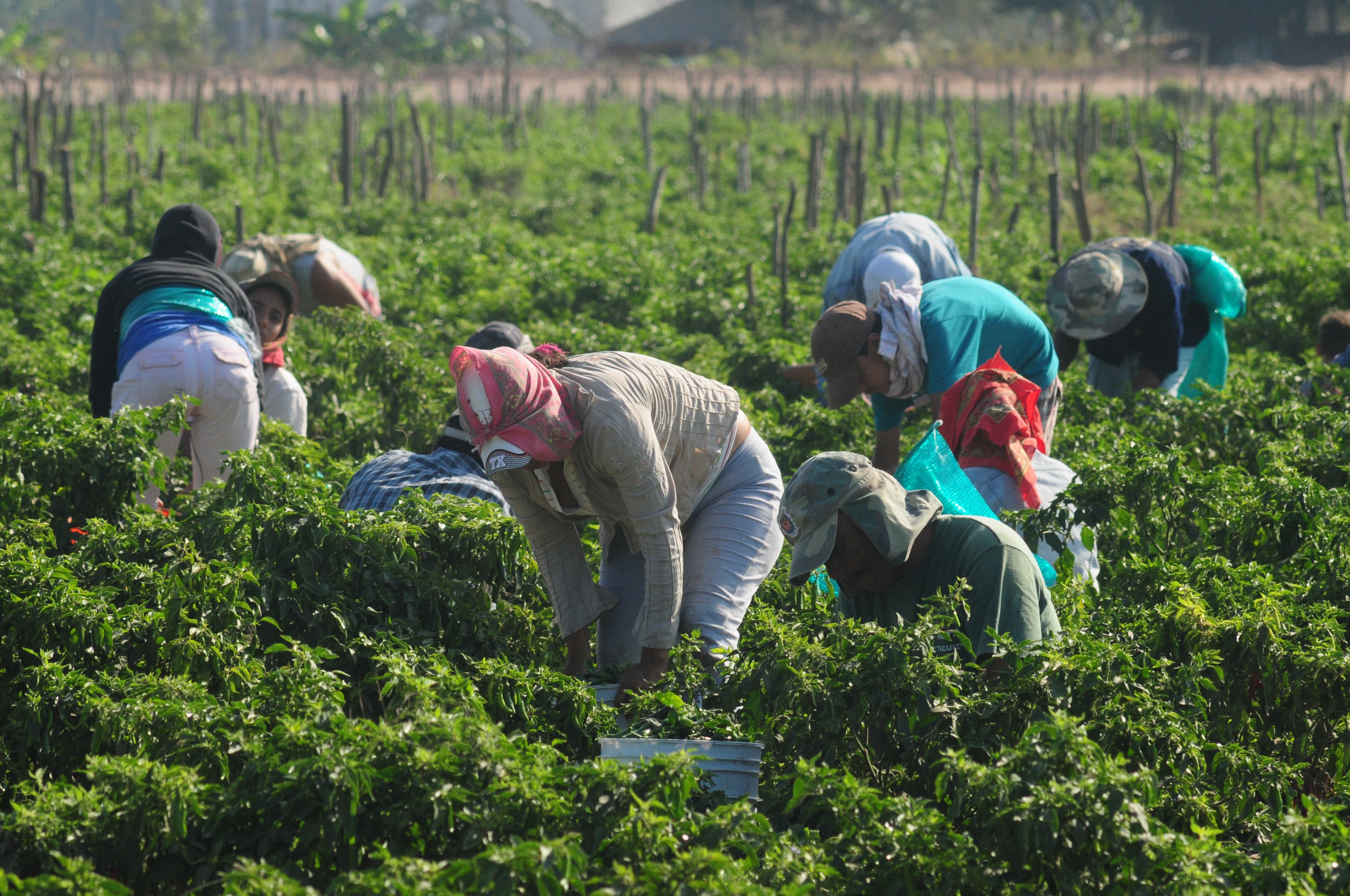Unproductive subsistence agriculture

- Subsistence farming patterns
- Peasant farming
- Tradition-bound agricultural methodology
- Lack of mechanized agriculture
- Inefficient manual farming
Nature
Subsistence agriculture is characterized by extremely limited capital resources, constancy in the use of traditional methods of production and in the commodities produced, and low productivity of land and labour. These characteristics tend to perpetuate the existing situation whereby agriculture produces barely enough for survival, and cannot therefore make a substantial contribution to economic growth. As a result, countries in which the majority of the population is engaged in subsistence agriculture, and which have no other important natural resources, are inevitably poor and their economies remain stagnant. The low productivity of subsistence agriculture is perpetuated by a vicious circle of problems: from low productivity of resources to underemployment to low income to low savings to low investment in farm to low yields, back to low productivity. In order to acquire the necessary agricultural inputs to produce, the traditional farmer uses brokers and obtains funds at a very high price. S/he buys the inputs from merchants who charge high prices and impose harsh payment conditions. The farmer's production is acquired by middlemen who pay the lowest possible price. This situation is widespread and always to the disadvantage of the farmer who is unable to extricate her/himself from the cycle. In addition, gender disparities are vast. Women play a significant role in subsistence agriculture, yet they often face gender-based inequalities, including limited access to resources and education. Subsistence farming can be held responsible (at least in part) for deficient diets and subsequent malnutrition and disease, for keeping peasants largely isolated from the rest of society, and for an outlook which, through its sociocultural context, keeps the peasant at a subsistence level even though s/he could possibly improve her/his lot. In addition to resulting in poor economic production and participation, subsistence farming can be a causative factor in peasant revolts.
Incidence
Unproductive subsistence agriculture remains a significant global issue, particularly in developing regions. According to the Food and Agriculture Organization (FAO), approximately 2.5 billion people depend on subsistence farming for their livelihoods. Despite its importance, the productivity of subsistence agriculture often falls short of meeting basic needs, and many households struggle with food insecurity. As of the FAO's last assessment in 2021, about 9.9% of the world's population suffers from chronic undernourishment.
A key challenge in unproductive subsistence agriculture is the limited access to modern farming practices and resources. Small-scale farmers typically lack access to high-yield seeds, fertilizers, irrigation systems, and mechanized equipment, which can significantly enhance productivity. Consequently, their crop yields remain low, leading to insufficient food production. Furthermore, environmental factors such as droughts, floods, and pests disproportionately affect subsistence farmers, causing crop failures and exacerbating food insecurity.
According to FAO, in 2015: "An average smallholding family in Kenya generates gross income of about $2 527 per year (measured in 2009 prices). With a family size of five persons –women, men and children – this amounts to about $1.4 per day per person. With this little money the family should meet a range of expenses - from buying food, inputs and clothes to paying for housing, education and health services.
In 1980, approximately 70 million Latin American subsistence farmers had, after providing their own food requirements, less than $20 per year left over to spend on manufactured articles.
Claim
Unproductive subsistence farming isn't just a global crisis; it's a deeply personal struggle for millions. As one of the 2.5 billion individuals who rely on it, they constantly battle the specter of hunger, unsure if they can provide enough for their family. The scarcity of resources and outdated techniques keep them trapped in a cycle of hardship. Their hopes wither with each crop failure, as climate change and soil depletion threaten their future. This isn't just a distant problem; it's an intimate, relentless fight against poverty and uncertainty that they face every day, leaving them and many others on the edge of despair.
Subsistence agriculture results is grinding poverty, massive unemployment, drift to the cities, and a pervading atmosphere of unrest and irritation conducive to peasant risings, religious millennialism, and the empty-eyed apathy of those whose social circumstances make a mockery of hope.
In Asia, seven persons engaged in agriculture produce only enough food for 10 families, whereas each farmer in an industrialized country produces enough food for 20 or more people – and that food is more adequate in nutritional terms, being primarily composed of high-cost proteins rather than primarily starchy products such as the cereals, roots, and tubers produced by his Asian counterpart.
Counter-claim
Subsistence is far more than marginal existence. It is a way of living and often the basis of traditional economies and cultures. It provides food, shelter and clothing, albeit at a very low level, to all members of the farm family, thereby avoiding their becoming a charge to society as a whole. Subsistence farming develops skills and and understanding of the local environment enabling people to live directly off the land. The environment is protected because of the direct relationship between the farmer and nature. It involves cultural values and attitude different and often alien to those of the urbanized world, mutual respect, sharing, resourcefulness and understanding of the intricate interrelationships between the environment, animals and humans. It implies protecting the land from over exploitation.



